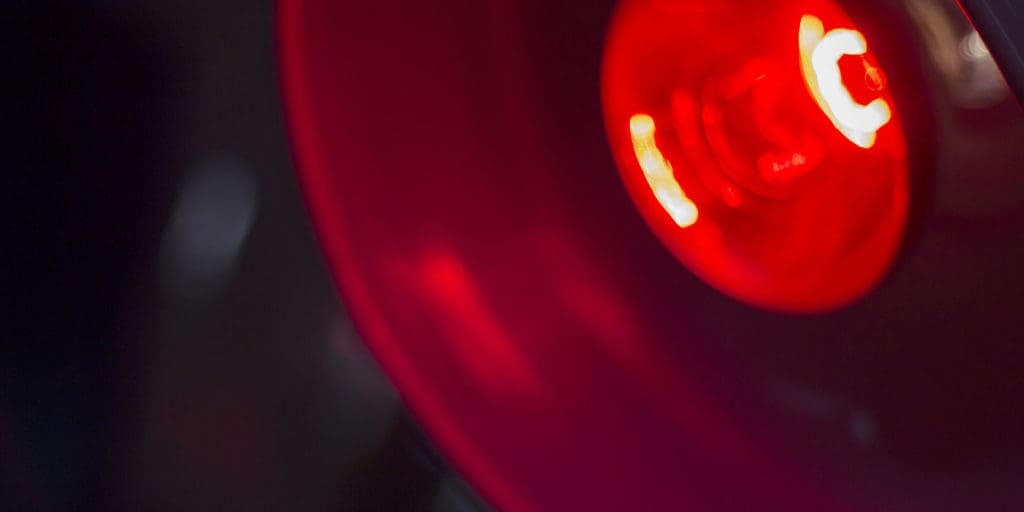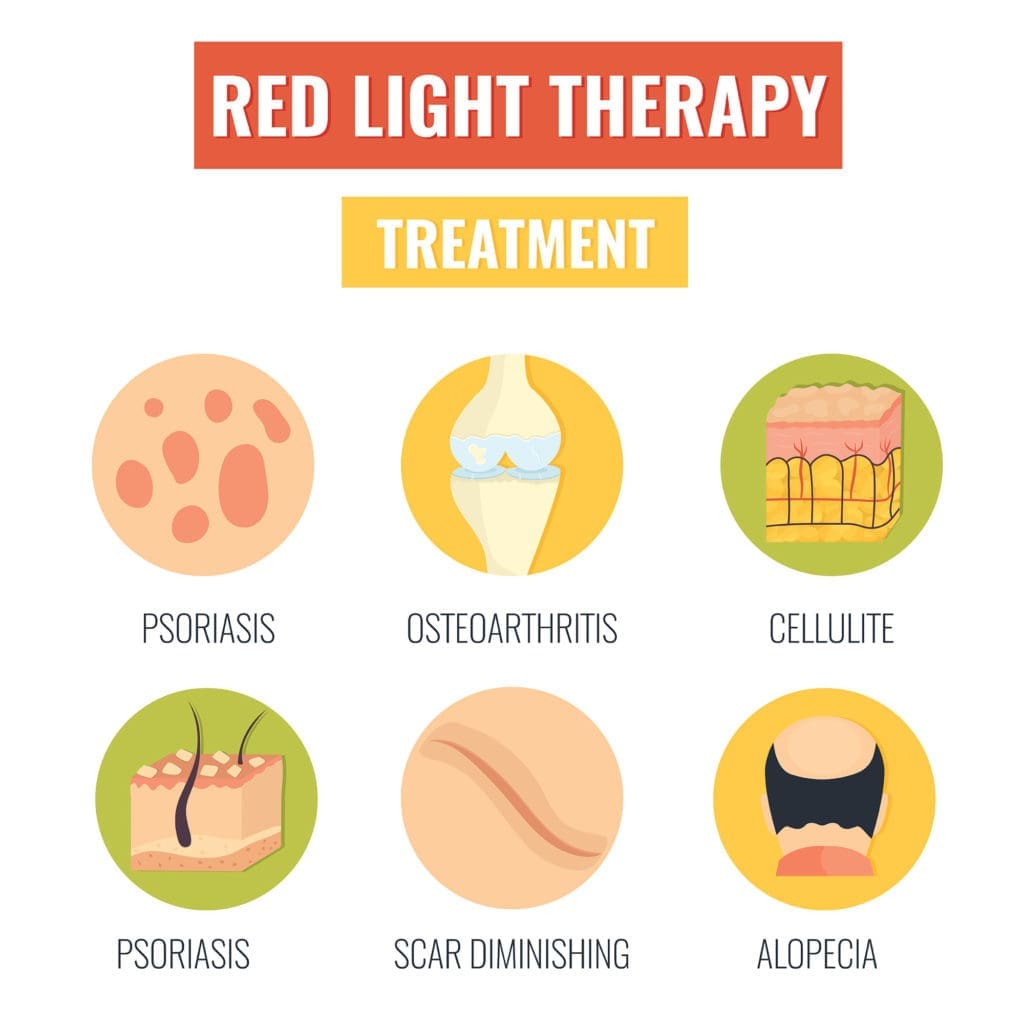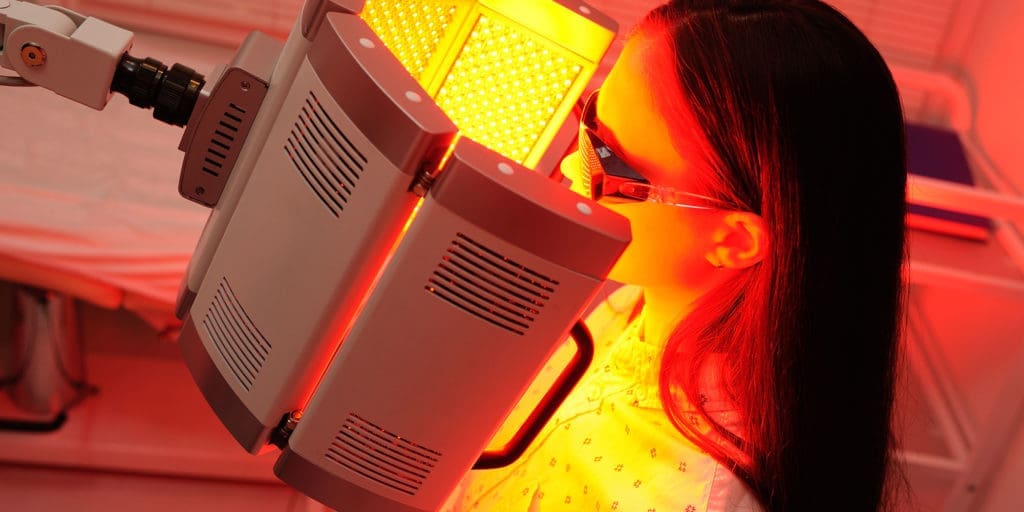Earlier in 2020, we reported on red light therapy (RLT) as a promising advanced treatment for chronic conditions such as rheumatoid arthritis and seasonal affective disorder. Now, a new study has found that RLT may be a safe and effective treatment for improvement of vision decline.
Read on to learn about how RLT may improve vision loss and other eye conditions. We’ll also touch on how RLT may help chronic pain sufferers with other long-term medical problems.
What Is Red Light Therapy?
Red light therapy is also called low-level laser light therapy (LLLT) and photobiomodulation (PBM). It uses an LED red-light therapy device to produce natural infrared or near-infrared (NIR) light. The user or therapist directs the light to treat pain and inflammation in many areas of the body.
The wavelengths of red light penetrate the skin and are absorbed by the cells. The light can’t be seen by the human eye but can produce a gentle heat on the skin surface.
In the study noted above, subjects were treated for three minutes a day for two weeks with near-infrared light. At the end of the study, subjects had 14% better color contrast sensitivity. Those subjects over 40 had the most significant improvement at 20%. Both groups also had improved ability to see in low light. Once again, those over 40 had greater improvement.
Is There Other Research into the Effectiveness of RLT?
Yes, there is a relatively large body of research. Prior to the new study, previous research was done with animals. Several studies, for example, have demonstrated improvement of age-related retinal changes in mice.
Others have found that red-light wavelengths may improve other signs of aging. A 2015 study concluded that NIR used on fruit flies extended their lifespan significantly; 100% to 175% of flies treated with daily NIR lived to old age compared to untreated flies. The treated flies also showed greater mobility, which could be great news for people with chronic joint pain.
RLT is used in a growing list of specialties to treat a wide range of chronic conditions. Those specialties include neurology, dermatology, psychiatry, oncology, and oral surgery.
“If you use this every day, we have no evidence to say it’s detrimental,”
How Does Red Light Therapy Work?
There are two kinds of laser light therapy used for healing. One is called red light therapy, which doesn’t penetrate deeply into the skin. It’s used mostly for skin conditions and eye issues.

The other type is infrared or near-infrared. Infrared light penetrates more deeply into the body, where it can affect cellular activity.
Once it reaches the cells, the secret to RLT’s ability to heal is within the cells’ mitochondria. Think of mitochondria as tiny engines found in all cells of the human body (except red blood cells). One of their functions is to generate the energy that cells need to do their jobs.
To do that, mitochondria produce a compound called adenosine triphosphate (ATP). ATP is the fuel that powers our cells.
The production of ATP slows as we age, up to 70% throughout a lifetime. That decline causes damage to the mitochondrial DNA. Researchers think red-light wavelengths stimulate the mitochondria to produce more ATP. The process recharges our cells and reduces the damage caused by aging.
The eye is a natural place for researchers to investigate because the retina is the location in the body that has the highest density of mitochondria.
“The retina ages faster than any other organ in your body,” according to Glen Jeffery, a neuroscience professor at the Institute of Ophthalmology University College in London, in an interview with CNN. “From an evolutionary perspective, we fundamentally have never lived past 40.”
It’s no coincidence that most of us start to notice vision changes at around age 40.
Is RLT Useful for Chronic Eye Conditions?
 The research suggests that it is. Studies have found that RLT can be helpful to improve conditions such as:
The research suggests that it is. Studies have found that RLT can be helpful to improve conditions such as:
- Macular degeneration
- Retinitis pigmentosa
- Optic neuropathy
- Glaucoma
- Optic nerve injury
- Diabetic retinopathy
RLT for Other Chronic Conditions
As we reported in the February 2020 article, the benefits of red light can extend to the full body. Researchers have found that infrared or near-infrared light can reduce inflammation and pain from chronic conditions such as rheumatoid arthritis, muscle injuries, and joint disease. Others have found it helpful for stretch marks and other skin issues, including wound healing (especially diabetic ulcers). It may also promote bone repair and hair regrowth.
However, it’s important to note that RLT has not been found to cure disease, only to improve or reverse specific symptoms.

For more details about RLT and the aging process, see the 2018 study published in the journal Aging.
Is Red Light Therapy Safe?
So far, evidence suggests that RLT is safe and effective for a wide range of uses. Many studies have found no adverse effects when red light therapy work is done correctly.
Dr. Jeffery agrees. “If you use this every day, we have no evidence to say it’s detrimental,” he said.
However, there are few double-blind controlled studies on humans to date. These will need to be conducted with larger groups of subjects and extended monitoring before researchers can say with certainty that it’s safe.
 RLT units are available for home use, but we recommend caution, particularly for use on the eyes. There are currently no dosage guidelines for RLT, and the eyes are a sensitive area. Overuse of light therapy could potentially cause damage.
RLT units are available for home use, but we recommend caution, particularly for use on the eyes. There are currently no dosage guidelines for RLT, and the eyes are a sensitive area. Overuse of light therapy could potentially cause damage.
Even if you’re considering buying a home unit for other purposes, we recommend seeking medical advice first.
The Takeaway
Red light therapy appears to have great promise as a natural, painless, and relatively inexpensive treatment for many human ailments. It’s non-invasive and has few adverse effects. Hundreds of clinical studies have found it safe and effective; however, more rigorous research is needed.
If you’re interested in trying red-light therapy yourself, we recommend finding a clinic or salon that offers it before you DIY. And if you’re thinking of RLT for your eyes, we don’t recommend trying that at home.
What questions do you have about red light therapy?
Share your ideas in the comments or email us at info@painresource.com.
Are you on Facebook?
Join our online community by clicking here.


Currently getting set up for red light therapy, hope it works!
Keep us posted Paul!